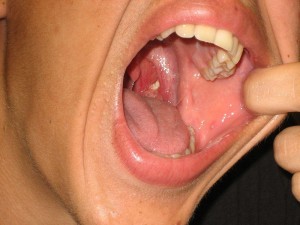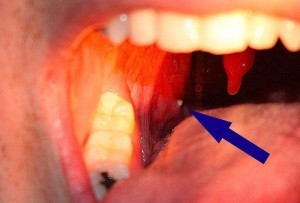Tonsil Stones Removal & Pictures
What Are Tonsil Stones?
Tonsil stones or tonsilloliths are compacted and calcified stones formed in the tonsillar crypts or crevices of the throat and most frequently in persons suffering from recurrent chronic tonsillitis. Most cases of tonsil stones do not hamper daily functioning or cause discomfort and a person may not even know that they have a tonsil stone.
What Are the Tonsils?
The tonsils are masses of lymphoid tissue on either side of the throat. Along with the adenoids and other lymphoid tissues, the tonsils form a protective ring around the back of the throat against invading pathogens. They are the first line of defense of our body and in their effort to protect the lungs and gut, they become infected themselves, resulting in tonsillitis. In childhood, when the other immune mechanisms are not as well developed, a child may have recurrent bouts of tonsillitis which becomes a predisposing factor towards developing a tonsil stone.
How Does Tonsil Stone Form?

Tonsillolith in Tonsillar Crypt
Tonsil stones are formed when food particles get trapped in the deep tonsillar crypts and are acted upon by the digestive enzymes present in saliva. These food particles get broken down but some hard particles get left behind in the crevices in the tonsil. Over these remnant food particles, layers of bacteria, mucus and dead cells are deposited, which form the tonsil stones with a hard gritty center and a soft cheesy yellowish white covering. These tonsil stones are usually small and asymptomatic, but they may go on to become large yellow or grey stones producing various symptoms.
Signs and Symptoms of Tonsil Stones
Most tonsil stones are small and even some large stones may not cause any symptoms.
- Halitosis (bad breath) – this is one of the most common symptoms associated with tonsil stones. The stones contain a high quantity of volatile sulfur compounds which is responsible for the ‘rotten egg’ bad breath (possibly even sulphur burps).
- Persistent irritation or a foreign body sensation at the sides of the throat which may lead to shallow coughing and hacking.
- Recurrent acute aggravations of chronic tonsillitis.
- Persistent sore throat.
- Throat pain which may not be related to the sore throat.
- Referred painto surrounding structures like the ear (otalgia)
- Post nasal drip
- Dysphagia – difficulty swallowing.
Diagnosis of Tonsil Stones
- Stones may be seen on examination of the sides of the throat as white or yellowish white solid lumps.
- Since most tonsil stones are asymptomatic, they often get diagnosed only on X-ray or CT scan done on the area (usually for other pathologies).
Treatment of Tonsil Stones
No definitive treatment may be required in most cases of tonsil stones, especially in asymptomatic cases. Good oral hygiene should be practice to minimize any chance of infection. Antimicrobial mouthwashes, or salt water, can be used as a gargle on a daily basis. In cases of an infection, antibiotics will be necessary along with anti-inflammatory drugs.
Tonsil Stone Removal

Picture of Tonsil Stones
Surgical removal of tonsil stones should only be considered in severe cases of persistent pain and recurrent infections. If the tonsil stone can be clearly seen and removed, it should be conducted under local anesthetic by your doctor or otolaryngologist (ENT specialist). However if there is necrosis (tissue death) of the tonsils or the tonsil stone cannot be clearly seen, a tonsillectomy (tonsil removal) may have to be considered. This procedure is performed under general anesthetic and should only be performed by an otolaryngologist if possible. Post-operative complications are not usually severe but may include short term bleeding, throat pain and difficulty swallowing.
Prevention of Tonsil Stones
Good oral hygiene will play an important part in preventing a tonsil stone or reducing the size and severity. However it is difficult to avoid altogether especially if you suffering with chronic tonsillitis. In these cases, the only way to prevent a tonsil stone is to first attend to the tonsillitis, usually by having a tonsillectomy. Never attempt to ‘pick’ or remove a tonsil stone with a tooth pick or any other sharp object as you can cause bleeding of the tonsils and infections.





